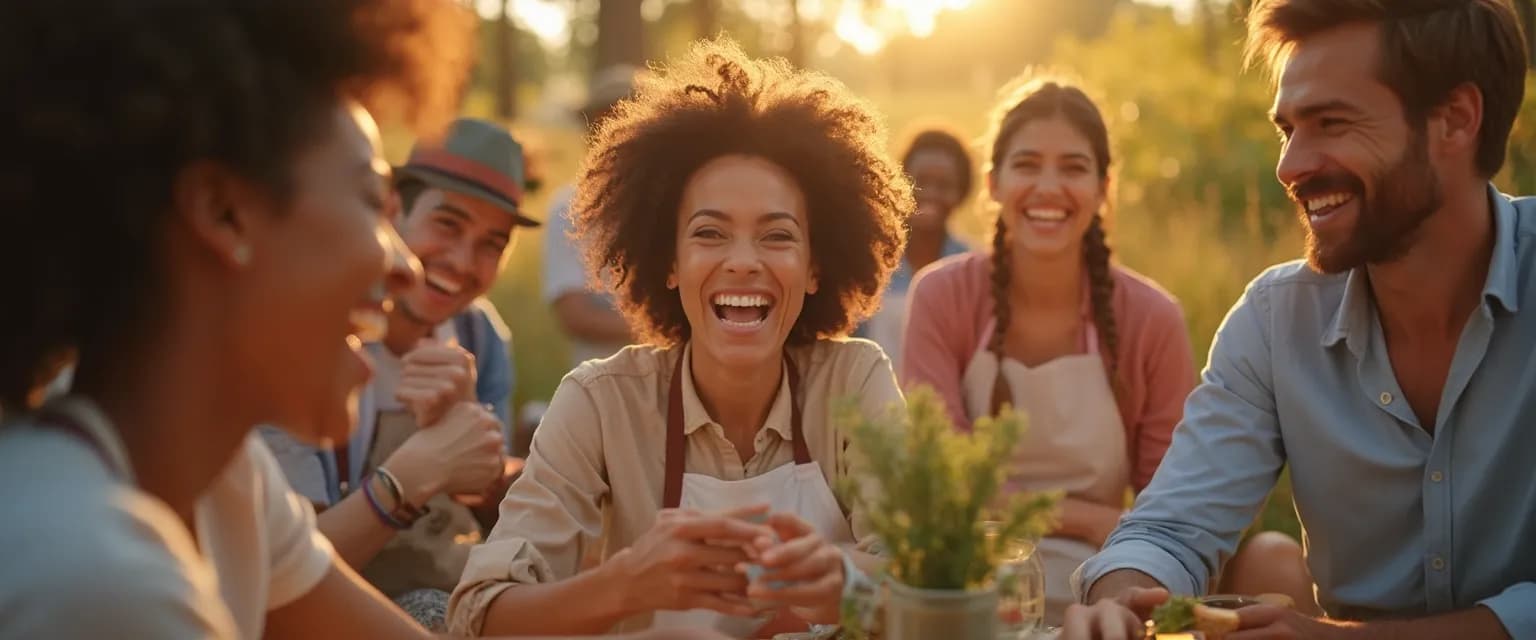Beyond Solo Joy: 7 Ways Happiness Is Only Real When Shared | Happiness
Ever noticed how a sunset feels more magical when shared with someone special? That's because happiness is only real when shared—a truth that resonates deeply with our human experience. While solo achievements certainly bring satisfaction, research consistently shows that our most profound joy comes from experiences we share with others. This isn't just feel-good philosophy; neuroscience confirms that our brains are literally wired to amplify happiness when we connect with others.
The concept that happiness is only real when shared isn't just poetic—it's practical. Whether you're an extrovert who thrives in crowds or an introvert who prefers intimate gatherings, the joy that comes from shared experiences creates deeper neural pathways and more lasting memories than solo endeavors. Let's explore seven ways to harness this powerful truth in your everyday life, transforming ordinary moments into extraordinary memories through the magic of connection.
From family dinners to community events, these practical strategies will help you experience firsthand why meaningful social connections matter so much to our happiness and wellbeing.
Why Happiness Is Only Real When Shared: The Science Behind Connection
When we share positive experiences, our brains release a powerful cocktail of feel-good chemicals. Oxytocin (the bonding hormone) and dopamine (the reward chemical) flood our neural pathways, creating a biological happiness amplifier that solo experiences simply can't match. This explains why happiness is only real when shared at a neurological level.
Studies from the University of Virginia found that sharing experiences—even without communicating during them—enhances and intensifies those experiences. Participants rated pleasant images as more enjoyable and unpleasant images as more aversive when viewed simultaneously with others versus alone.
Even more fascinating, research published in Psychological Science reveals that memories of shared experiences remain more vivid and emotionally potent over time compared to solo memories. When you experience something alone, your brain creates a single neural imprint. But when happiness is only real when shared, multiple brain regions activate, creating stronger, more resilient memory networks.
This preference for shared joy isn't just psychological—it's evolutionary. Our ancestors survived by cooperating and forming tight social bonds. Those who found happiness in shared experiences were more likely to maintain protective social groups, passing down the genetic and cultural predisposition that happiness is only real when shared.
7 Practical Ways to Experience That Happiness Is Only Real When Shared
Ready to put this powerful principle into practice? Here are seven actionable ways to experience that happiness is only real when shared in your everyday life:
1. Create Family Rituals
Establish consistent family traditions like Sunday dinners or holiday customs. These predictable shared experiences create lasting bonds and give everyone something to anticipate. Even simple rituals like a special weekend breakfast become powerful happiness anchors when shared regularly.
2. Transform Solo Activities
Take activities you normally do alone and invite others to join. Your daily walk becomes a stress-reduction opportunity when shared with a friend. Reading becomes a book club. Cooking becomes a shared culinary adventure.
3. Engage in Community Events
Local festivals, volunteer opportunities, and neighborhood gatherings expand your "happiness network" beyond close friends and family. These shared experiences connect you to your broader community and create a sense of belonging.
4. Practice Digital Connection
For distant loved ones, create meaningful digital rituals. Virtual game nights, synchronized movie watching, or sharing photos of parallel experiences help bridge the physical gap, proving happiness is only real when shared, even across distances.
5. Try Micro-Sharing for Introverts
If large gatherings drain you, focus on "micro-sharing"—intimate experiences with just one or two others. These smaller connections still activate the neurological benefits of shared joy without the social overwhelm.
6. Share Skills and Knowledge
Teaching someone a skill you've mastered creates a uniquely satisfying shared experience. The happiness is only real when shared principle shines when you witness someone's growth because of your guidance.
7. Bridge Generational Divides
Create experiences that connect different generations. The perspective contrast makes these shared moments particularly meaningful and creates a sense of continuity and legacy in your personal growth journey.
Making 'Happiness Is Only Real When Shared' Your Daily Reality
Transforming this principle from theory to daily practice requires intentionality. Start by identifying three opportunities this week where you could convert a solo activity into a shared one. Perhaps it's inviting a neighbor on your evening walk or calling a friend while cooking dinner.
Balance is crucial—even with the knowledge that happiness is only real when shared, personal space remains important. The goal isn't constant companionship but rather strategic connection that enhances your wellbeing.
Consider creating a "shared joy calendar" where you schedule at least two meaningful shared experiences weekly. These don't need to be elaborate—a 15-minute coffee with a colleague counts if it's genuinely connecting.
Remember that happiness is only real when shared works both ways. When you prioritize creating shared experiences, you're not just enhancing your own joy—you're contributing to others' happiness too. This reciprocal effect creates an upward spiral of wellbeing that benefits everyone involved. By embracing this principle, you transform not just your own experience of happiness, but create ripples of joy that extend far beyond yourself.




